Discography
 "Rush" - release 1974: Mercury Records.
"Rush" - release 1974: Mercury Records.
 "Fly By Night" - release 15.02.75: Mercury Records.
"Fly By Night" - release 15.02.75: Mercury Records.
 "Caress of Steel" - release 1975: Mercury Records.
"Caress of Steel" - release 1975: Mercury Records.
 "2112" - release 1976: Mercury Records.
"2112" - release 1976: Mercury Records.
 "All the World's a Stage" - release 29.09.76: Mercury Records.
"All the World's a Stage" - release 29.09.76: Mercury Records.
 "A Farewell to Kings" - release 1977: Mercury Records.
"A Farewell to Kings" - release 1977: Mercury Records.
 "Archives" - release 1978: Mercury Records.
"Archives" - release 1978: Mercury Records.
 "Hemispheres" - release 29.10.78: Mercury Records.
"Hemispheres" - release 29.10.78: Mercury Records.
 "Permanent Waves" - release 1980: Mercury Records.
"Permanent Waves" - release 1980: Mercury Records.
 "Moving Pictures" - release 07.02.81: Mercury Records.
"Moving Pictures" - release 07.02.81: Mercury Records.
 "Exit..Stage Left" - release 1981: Mercury Records.
"Exit..Stage Left" - release 1981: Mercury Records.
 "Signals" - release 1982: Mercury Records.
"Signals" - release 1982: Mercury Records.
 "Grace Under Pressure" - release 12.04.84: Vertigo Records
"Grace Under Pressure" - release 12.04.84: Vertigo Records
 "Power Windows" - release 26.10.85: Vertigo Records.
"Power Windows" - release 26.10.85: Vertigo Records.
 "Hold Your Fire" - release 08.09.87: Mercury Records
"Hold Your Fire" - release 08.09.87: Mercury Records
 "A Show of Hands" - release 09.01.89: Vertigo Records.
"A Show of Hands" - release 09.01.89: Vertigo Records.
 "Presto" - release 18.11.89: Anthem/Atlantic Records.
"Presto" - release 18.11.89: Anthem/Atlantic Records.
 "Chronicles" - release 04.09.90: Mercury Records.
"Chronicles" - release 04.09.90: Mercury Records.
 "Roll the Bones" - release 03.09.91: Anthem/Atlantic Records.
"Roll the Bones" - release 03.09.91: Anthem/Atlantic Records.
 "Counterparts" - release 19.10.93: Anthem/Atlantic Records.
"Counterparts" - release 19.10.93: Anthem/Atlantic Records.
 "Test for Echo" - release 10.09.96: Anthem/Atlantic Records
"Test for Echo" - release 10.09.96: Anthem/Atlantic Records
 "Retrospective one" - release 06.05.97: Mercury Records.
"Retrospective one" - release 06.05.97: Mercury Records.
 "Retrospective Two" - release 29.05.97: Mercury Records.
"Retrospective Two" - release 29.05.97: Mercury Records.
 "Different Stages" - release 10.11.98: Anthem/Atlantic Records.
"Different Stages" - release 10.11.98: Anthem/Atlantic Records.
 "Vapor Trails" - release 14.05.02: Anthem/Atlantic Records.
"Vapor Trails" - release 14.05.02: Anthem/Atlantic Records.
 "The Spirit of Radio" - release 11.02.03: Anthem/Atlantic Records.
"The Spirit of Radio" - release 11.02.03: Anthem/Atlantic Records.
![Rush in Rio [Live]](./pics/rush_rio.jpg) "Rush in Rio [Live]" - release 21.10.03: Anthem/Atlantic Records.
"Rush in Rio [Live]" - release 21.10.03: Anthem/Atlantic Records.
[ USA only ]
- " single " (01.01.01)
- " single " (01.01.01)
- " single " (01.01.01)
- " single " (01.01.01)
- " single " (01.01.01)
- " single " (01.01.01)
- " single " (01.01.01)
- " single " (01.01.01)
- " single " (01.01.01)
- " single " (01.01.01)
- " single " (01.01.01)

"Rush Chronicles" - release 04.09.90: Warner Bros.
"Rush in Rio - Dvd" - release 21.10.03: Atlantic/Warner Bros Records.
"Feedback - Dvd" - release June 2004: Atlantic/Warner Bros Records.
"Rush R30 - Dvd" - release Nov 2005: Atlantic/Warner Bros Records.
~ Rush ~
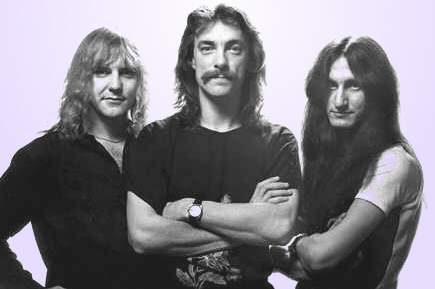
- Geddy Lee
- [b 29.07.53 - Toronto, Canada]. Vocals, Bass, Keyboards, Synthesizers.
- Alex Lifeson
- [b. 27.08.53 - Fernie, British Columbia, Canada].
Guitars, Synthesized guitars, Bass pedals, backing vocals. - Neil Peart
- [b. 12.09.52 - St. Catharines, Canada].
Drums, Percussion, Electronic Sequencing.
intro
Hailing from Toronto, this is undoubtedly Canada's finest rock export, (with the exception of maybe Neil Young). This trio have built their own success on unrivalled live performances, and surpassed all the major rock acts of their times, including "Led Zeppelin", "Genesis", and "Yes" and "Van Halen". And they are still as strong as ever in 2006. Recently releasing their "30" year benchmark live DVD and CD, Rush have become a legend to fans, and proved their worth with over 35 million sales across 18 studio albums, and an entry into the Canadian Hall of Fame for influential music in 1994.
Biography
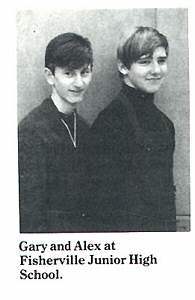 1968 - It all began in Toronto, Canada, where Alex Zivojinovich, (Lifeson), John Rustey, (Drums), and Jeff Jones, (Bass and vocals), formed a garage band. Calling themselves "Rush", they played covers of songs by "The Yardbirds", and "The Who", and were heavily influenced by "Cream" and a new and upcoming band called, "Led Zeppelin". Jeff Jones soon quit the band, and was replaced on Bass and vocals by Gary Lee Weinrib, (nicknamed "Geddy" because this is how his Yiddish grandmother pronounced his name).
1968 - It all began in Toronto, Canada, where Alex Zivojinovich, (Lifeson), John Rustey, (Drums), and Jeff Jones, (Bass and vocals), formed a garage band. Calling themselves "Rush", they played covers of songs by "The Yardbirds", and "The Who", and were heavily influenced by "Cream" and a new and upcoming band called, "Led Zeppelin". Jeff Jones soon quit the band, and was replaced on Bass and vocals by Gary Lee Weinrib, (nicknamed "Geddy" because this is how his Yiddish grandmother pronounced his name).
1969 - With the addition of a Keyboard and backing guitarist, Lindy Young, the band line-up was complete, and they set about playing covers in local bars and venues, whilst writing their own material. Mid '69, and the band changed it's name to "Hadrian", but things did not work out, and soon after, Geddy Lee quits to form his own band. He was replaced by Bass guitarist Joe Perna. Lee formed his own band called "Judd", and soon Keyboard player Lindy Young joined him, leaving Lifeson and co.
Like many young bands striving for originality and fame, both bands eventually split due to differences and unforeseen circumstances, leaving a wealth of unexplored talent in their wake. However, not to be deterred, Geddy Lee rejoins Alex Lifeson and John Rutsey to re-form "Rush", carrying on where they had previously left off.
1971 - Early on, Mitch Bossi joins the band as an additional guitarist, but soon leaves, and the band is back to a trio once more. Rush continue to write and play their own material, determined to find success.
1973 - Rush decide they need to release a single, and with no record company backing, they form their own record label named "Moon records". The single A-side was a cover version of Buddy Holly's "Not Fade away", and the B-side a Lee/Rutsey song called, "You can't fight it". Passing their single around Toronto radio stations, with little or no success and little air play, the single was mostly sold at club gigs, or even given away to keen fans or friends.
Despite the lack of interest by local radio stations, Rush decide they have enough material to release an album. Released on Moon records with the help and promotion of management staff Ray Danniels and Vic Wilson, and produced by themselves, Rush release their debut self titled album. The Album included the songs, "Finding my way", "Working man", and "In the mood", (now usually performed as a medley at the finale of Rush live performances).
With little interest or acceptance by Canadian radio stations, Rush passed copies across the border to the U.S. in the hope of some recognition and radio air play. They were eventually played by some smaller Rock radio stations including WMMS-FM, Cleveland, who helped them with their first US radio breakthrough. With Geddy Lee's vocal somewhat similar to the wails of Robert Plant, they were often likened to, and even mistaken for "Led Zeppelin". "Finding my way", was now breaking the ice back home in Canada, and the US interest was now sparking new acceptance for the local band back in Toronto.
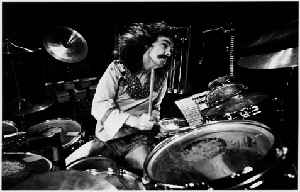 1974 - Interest in Rush was spreading fast, and with record stores beginning to sell out minimal copies of their first album, it was time they signed for a major label. With both Columbia and Mercury records now approaching the band with contracts, it was Mercury who eventually signed them, with promises of more freedom to explore their music fully. Rush had already played across the border, and the new contract and promotion set them on track for a major tour of the US supporting "Kiss". However, before they had completed their tour, and with half the dates still left, John Rutsey decides to quit the band due to health reasons, (he was a diabetic), and Rush were left to quickly find a replacement drummer to fulfill their contracts.
1974 - Interest in Rush was spreading fast, and with record stores beginning to sell out minimal copies of their first album, it was time they signed for a major label. With both Columbia and Mercury records now approaching the band with contracts, it was Mercury who eventually signed them, with promises of more freedom to explore their music fully. Rush had already played across the border, and the new contract and promotion set them on track for a major tour of the US supporting "Kiss". However, before they had completed their tour, and with half the dates still left, John Rutsey decides to quit the band due to health reasons, (he was a diabetic), and Rush were left to quickly find a replacement drummer to fulfill their contracts.
July - It was Neil Peart, who auditioned and gained the place as drummer with Rush. The 22 year old, was also from Canada, south of their home town of Toronto. Playing the drums since his 'teens', Neil had spent time in London, UK, and tried his hand with several small unsuccessful bands. He quickly became disillusioned there, and returned back home to Canada, (a smart move indeed). Peart had a lot to offer Rush, not just impressive drumming skills, but lyrical inspiration, with his interest in mythology and Science fiction. They completed their US tour obligations together, and returned home to write for their next album.
1975 - February. Rush are back on the road again supporting "Kiss", and "The Tubes", across the US. They release their second album, "Fly by Night", on Mercury records, and produced with Terry Brown. This album was a major leap forward from contemporary "Zeppelin" styled rock ballads to heavy prog-rock concept music. The album contains the untouchable "By Tor and the Snow dog". Lasting almost nine minutes on side one, the track takes us on a journey of sound and storyline, with pacing bass lines and drums, and wild imaginative sound scapes on guitar from Lifeson. Peart had been the catalyst for the perfect transformation in Rush, and this was only the beginning. With the technically brilliant opening drum masterpiece, "Anthem", to the excellent title track, "Fly by Night", the album also included acoustic tracks, "Rivendell", and "In the end". With Peart's lyrical influence from Mythology and Tolkein's "Lord of the Rings".
September - With more material to spare, and nothing stopping them now! Rush release their third album the same year, titled, "Caress of Steel". Again, heavily influenced by Peart's lyrics, this was another prog-rock fantasy, and included the twelve minute epic, "The Necromancer", with Rush standard, "Bastille day", and "Lakeside park". Side two was completely devoted to the concept track, "Fountain of Lamneth".
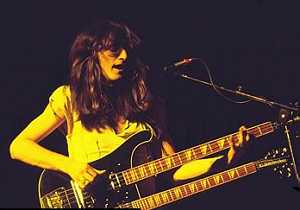 1976 - February again, and Rush release their fourth studio album titled, "2112". This album ventured into the future and sci-fi, rather than mythology and legend, and was again inspired by Peart and his vision of a 21st century civilization ruled by an oppressive priesthood and "Temples of Syrinx". Whilst it could be said this was maybe a step too far into personal indulgence, the musicianship and technical expertise was near perfect, (but not quite). It was the band's most successful album so far, and also included another Rush standard, "A Passage to Bangkok", and also a tribute to TV show, "The Twilight Zone".
1976 - February again, and Rush release their fourth studio album titled, "2112". This album ventured into the future and sci-fi, rather than mythology and legend, and was again inspired by Peart and his vision of a 21st century civilization ruled by an oppressive priesthood and "Temples of Syrinx". Whilst it could be said this was maybe a step too far into personal indulgence, the musicianship and technical expertise was near perfect, (but not quite). It was the band's most successful album so far, and also included another Rush standard, "A Passage to Bangkok", and also a tribute to TV show, "The Twilight Zone".
September - extensive US and Canadian touring helped perfect the Rush live performance, and now with a large enough back catalogue to play to keen audiences, Rush decide to release a live album, titled, "All the World's a stage". Recorded at the Massey Hall in Toronto, (June 11th to 13th), the double album featured an impressive list of tracks from their first four albums, including performances of concept epics "2112", and "By Tor and the Snow dog". Rush have never been a band to shy away from performing their most complicated musical compositions to a live audience, in fact quite the contrary. It has been their fearless approach to music, and their strive to be bigger and better, that has made them favourites with fans the world over.
1977 - June. With "2112" being praised across the US and Canada alike, and a fanbase growing across the UK and Europe, Rush set out to record their next studio album. This time they travel to Wales, UK, for inspiration, and record at the Rockfield studios, (where UK rockers "Queen" had previously recorded their album "A Night at the Opera", complete with hit single "Bohemian Rhapsody"). The album would be titled "A Farewell to Kings", produced again in collaboration with Terry Brown, with lyrics almost entirely written by Peart. The album includes the title track, and "Xanadu", inspired by the poem of Samuel Taylor Coleridge. More importantly this album would feature, what would become, the Rush rock standard, "Closer to the Heart", an essential part of the Rush live performance.
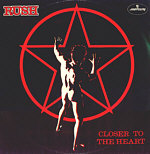 The final track is another piece of inspired writing by Peart. "Cygnus X-1, book 1 - The voyage", was the tale of an experimental space craft and it's voyage into the constellation containing a Black Hole. With Breathless anticipation, and climaxing musical score, our pilot plunges his craft, the "Rocinante" into the depths of the Black hole and into the unknown. The album inner sleeve lyric concludes with the footnote, "To be continued..."
The final track is another piece of inspired writing by Peart. "Cygnus X-1, book 1 - The voyage", was the tale of an experimental space craft and it's voyage into the constellation containing a Black Hole. With Breathless anticipation, and climaxing musical score, our pilot plunges his craft, the "Rocinante" into the depths of the Black hole and into the unknown. The album inner sleeve lyric concludes with the footnote, "To be continued..."
The album was released in September '77. "Closer to the Heart" was an instant hit with fans, and the Rush style and their musical artistry had reached a pinnacle in excellence.
1977 - August. Rush embark on their extensive "Drive till you die" tour of the US, supporting their new album. The tour would last until the end of May the following year.
November. Albums "2112", "All the World's a stage", and "A Farewell to Kings", all attain Gold sales.
1978 - April. The success of recent album sales prompted the release of triple album "Archives", a re-packaged issue of the bands first three albums, "Rush", "Fly by night", and "Caress of Steel". Rush added tour dates for the re-issue. They finally finish touring at the end of May.
1978 - June. Back again in Rockfield Studios, Rush were keen to record their 6th studio album, and sequel to "A Farewell to Kings". Rush were now masters of their music and success, with sell out tours across the US and UK and Europe. They were hailed by fans as the best rock band in the Universe, (a metaphor to their lyrical inspirations). The new album would continue where the last one had left off, from it's climatic finale. Side one: "Cygnus X-1, Book II - Hemispheres", would be entirely dedicated to the concluding story of the space craft "Rocinante" and the fate of it's sole pilot. With an inspirational twist worthy of any sci-fi best seller, Peart had truly stepped where no rock band had gone before, creating an unrivaled master work, far superior to "A Farewell to Kings". With untouchable musicianship, from all players, and their profound lyrical awareness, Rush had taken us to a world of their own making. No other rock band were even close to this level of prowess and performance. Side two contained the three tracks, "Circumstances", politically inspired "The Trees", and the instrumental epic "La Villa Strangiato", (inspired by Lifeson's plague of nightmares and dreams).
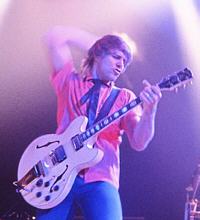 October - "Hemispheres" was released, by December the album had sold Gold, (500,000 copies).
Where could Rush go from here? They had reached the top of their climb for excellence, and touched the dizzy heights of their own potential's.
October - "Hemispheres" was released, by December the album had sold Gold, (500,000 copies).
Where could Rush go from here? They had reached the top of their climb for excellence, and touched the dizzy heights of their own potential's.
1979 - Rush embark on a sell-out tour of the US, UK and Europe. Performing "Hemispheres" live to astounded fans and critics. Their set included performing the entire "Hemispheres" album as well as old favourites like "By Tor and the Snow dog" and "Xanadu" with ease and precision. The marathon tour lasts from October '78 finishing back in the UK for a final two dates at Bingley Hall, Stafford, on September 21st, and 22nd 1979.
1980 - With the tide of the new decade, came renewed change in the rock music vogue, and the interest in young new bands. With the British music scene parting company with the old school rock tastes of "Led Zeppelin" and the prog-rock of "Yes" and "Genesis", Punk had also seen it's last fleeting days. Now the trend was a more radio friendly new wave of heavy metal glam, with bands like "Def Leppard", and more commercially acceptable bands like "The Police", and "Dire Straits". Across the Atlantic, the US airwaves were saturated with Californian, 'sunshine' rock bands like "Van Halen" and "Bon Jovi".
January - Rush release their next album, "Permanent Waves". This was a surprising change of direction for the band, perhaps because the times and music were set for change. "Permanent Waves" was a much more direct album, with the single "Spirit of Radio" defining the way forward for Rush into the next decade. Still looking for that break into the US music psyche and radio airplay perhaps? The album also featured the tracks "Freewill", (also a minor hit), and the excellent "Jacob's Ladder". The major radio hit and single breakthrough would inevitably come with their next forthcoming album.
